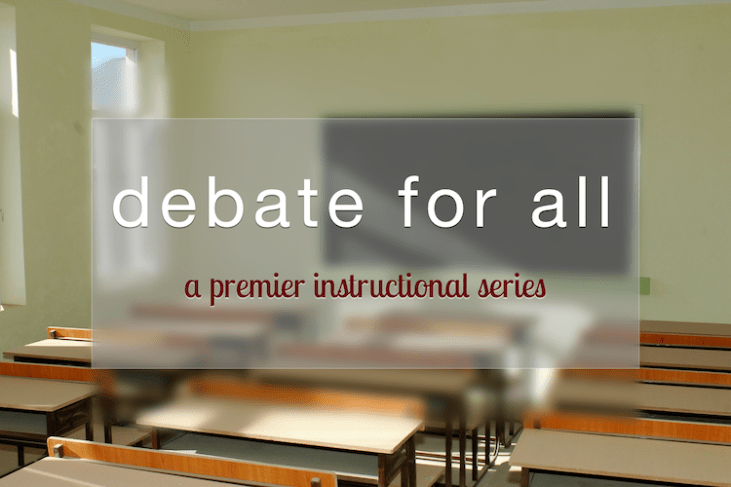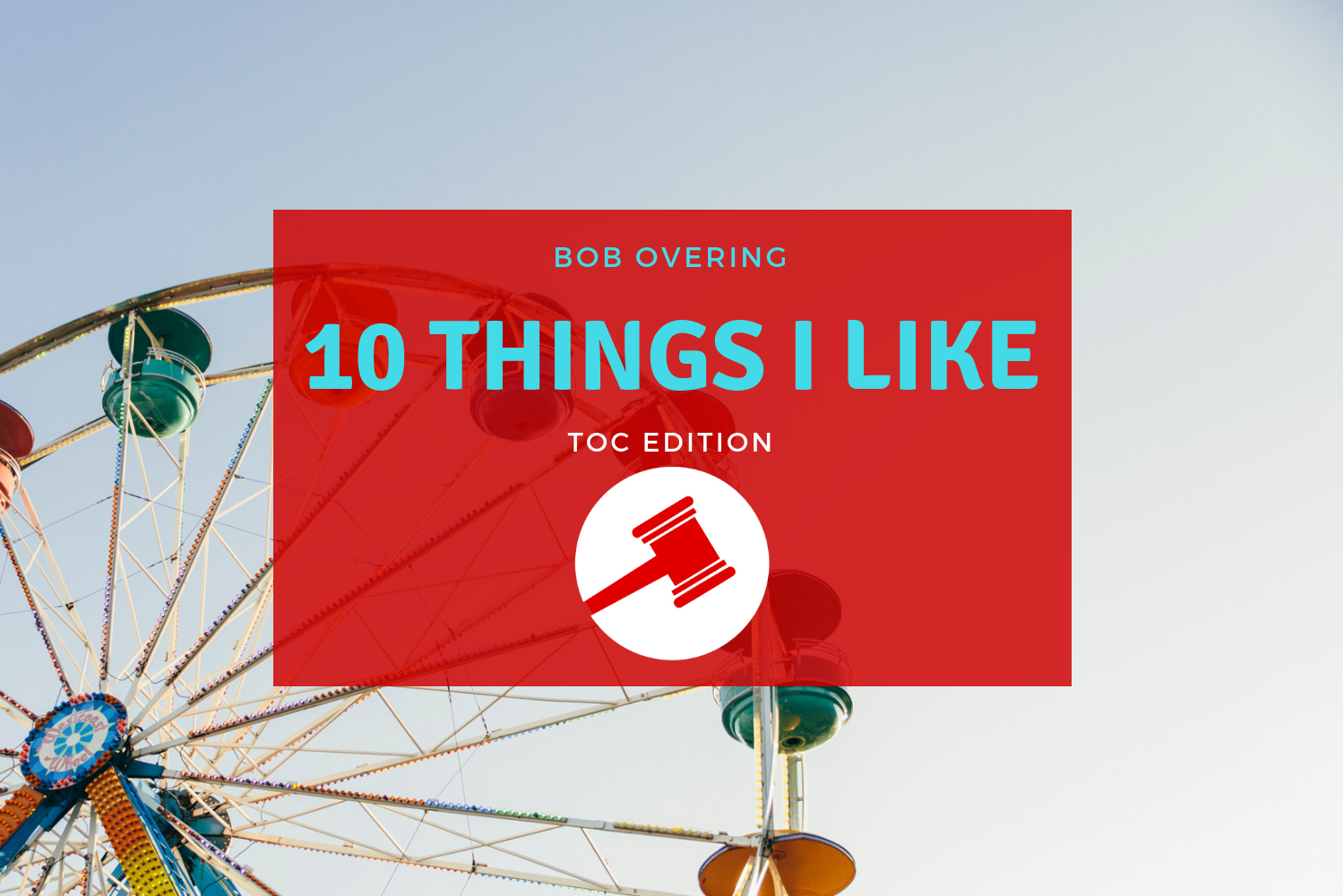Debate for All: Intro to Theory (Anuj Gupta)

The Problem
You’ve just read your Util AC, and the opponent is about to start the 1NC. You’re expecting deontology, but instead you get hit with five different counterplans, all conditional (meaning your opponent can “kick” them in the 2NR, rendering any of your answers moot). In the 1AR, you have great answers to the first counterplan, pretty good answers to the second, but when you start getting rushed, your objections get worse and worse. You finally get to the fifth counterplan, but after one measly “no solvency” argument, the timer goes off. Of course, the 2NR kicks the first four counterplans and extends the fifth. All that hard work on counterplans one through four is worth nothing in the 2AR, and you ultimately lose.
Something seems wrong – isn’t it totally unfair that the 2NR can ignore all your best objections to the first four counterplans and choose the point of clash best for it?
We need a hero. Someone bold and brave to fight this tomfoolery. Only theory can save the day.
The Solution
Theory arguments claim that the opponent did something unfair, uneducational or that otherwise violates the “rules” of debate. The catch-all term used to describe opponent wrongdoing is abuse. The best part about theory is that you can claim just about anything is abusive! And generally, since theory is a procedural issue (that should be decided before the substantive debate on the resolution), your opponent is forced to respond. It’s not that easy, however, because you always need to sell the theory argument to the judge. When deciding whether or not you want to read theory, you must first ask yourself whether or not you can soundly justify the abuse. Did your opponent unfairly ruin your strategy? Did (s)he read something that was impossible to predict? If you can’t think of a sound reason why the tactic was bad, then reading theory may not be the best course of action, as judges might perceive your theory shell as frivolous.
Format of a Theory Shell
So how do you advance a theory argument? There is a common structure used by most LD debaters as a template. And it goes like this:
A: The Interpretation or “Interp”
The interpretation represents the “rule” that your opponent could have followed to remedy their wrongdoing. This isn’t written down in a rulebook; it’s instead what you think should’ve happened but didn’t because of your opponent’s devious tactics.
Continuing our scenario above, you might say:
A) Interpretation: The negative debater may only read unconditional counterplans. To clarify, the neg can’t claim the right to kick a counterplan in the 2NR and instead must defend it against my answers.
A good interpretation clearly establishes what the opponent should have done. Sometimes this works best with “positive” claims about what is a legitimate practice (unconditional counterplans) and sometimes “negative” claims about what is illegitimate (kicking a counterplan). The more specific the interpretation, the better, but not so specific that you’re wasting time!
Know that debaters will often refer to parts of an interpretation as “planks.”
B: The Violation
The violation states that the opponent violated your interp – i.e. (s)he broke the rule you propose. In our scenario, a violation could be:
B) Violation: The negative debater read five conditional counterplans, claiming that they could kick any of them in the 2NR.
Some debaters will make multiple violation arguments to ensure that their opponents definitely violate.
If your violation isn’t clear or specific, your opponent can make “I meet” arguments, claiming the interpretation was not violated (e.g. “I never said my counterplans were conditional, and I never kicked any!”). An “I meet” generally moots the rest of the theory shell: since there’s no violation, there’s no reason to vote for your proposed interpretation.
C: The Standards (or Reasons to Prefer)
This is the meat of the theory debate. The standards are where you justify why the violation was abusive (unfair, uneducational, etc.) and why the interpretation solves. The standard title is just the label describing common explanations for abuse. Here are a few:
Ground Loss/Skew – The violation harmed the quality/quantity of arguments that you could make
Strategy Skew – The violation harmed your ability to form a coherent strategy to win the round
Predictability – The violation was extremely unpredictable
The list goes on and on. Here’s a sample standard for the shell we’re building:
Strategy Skew – by reading five conditional counterplans, the neg kills my ability to coherently form a strategy. If I respond really well to a counterplan, they’ll just kick it, but if I undercover a counterplan, they’ll go for it. Five counterplans makes this especially bad since I have to split my time among five positions, but they can just extend their best one. Developing a strategy is key to fairness since I need a viable way to win and key to education since we learn to be better debaters and engage one another.
Generally, debaters will link the standard to a generic impact like fairness or education and explicitly do so with the “key to fairness” or “key to education” rhetoric above.
D: The Voters
The voters are the reasons why the judge should care about the theory debate at all. The two most common voters in a theory debate are fairness and education. The beauty of voters is that they don’t need to change from shell to shell. Most debaters use the same voter rhetoric from round to round.
Here’s a sample voter:
D) Voters: Vote on fairness because a fair debate allows you to evaluate who is the better debater, not the better cheater. Vote on education to ensure that we actually gain knowledge from the round and learn from the debate.
Putting It Together
Let’s put it all together and see what our shell looks like:
A) Interpretation: The negative debater may only read unconditional counterplans. To clarify, the neg can’t claim the right to kick a counterplan in the 2NR and instead must defend it against my answers.
B) Violation: The negative debater read five conditional counterplans, claiming that they could kick any of them in the 2NR.
C) Strategy Skew – by reading five conditional counterplans, the neg kills my ability to coherently form a strategy. If I respond really well to a counterplan, they’ll just kick it, but if I undercover a counterplan, they’ll go for it. Five counterplans makes this especially bad since I have to split my time among five positions, but they can just extend their best one. Developing a strategy is key to fairness since I need a viable way to win and key to education since we learn to be better debaters and engage one another.
D) Voters – Vote on fairness because a fair debate allows you to evaluate who is the better debater, not the better cheater. Vote on education to ensure that we actually gain knowledge from the round and learn from the debate.
So, to recap – we establish our rule (the interp), we show that the opponent violated that rule (the violation), we justify why our rule is important (the standards), and we give a reason for why the judge should consider theory as a voting issue (the voters).
This is all you need to forward a coherent theory argument. Often, theory initiators will take a stance on two paradigm issues: (1) drop the argument vs. drop the debater, and (2) competing interpretations vs. reasonability. Those aren’t necessary parts of the shell but are good to have. We’ll cover them next time.
Author
Anuj Gupta debated for Roslyn High School (NY) for four years on both traditional circuits and the national circuit. He was the captain of his team and cleared at tournaments like the NYSFL Championships and NCFLs. Anuj has taught several debate events and a variety of debate styles, building his high school’s circuit program from scratch. Working with students who lack resources and official coaches, Anuj has a passion for developing programs that encourage independent debaters to join the circuit. He will be attending Columbia University in fall 2017.



